Climate change is a major global issue affecting the planet in numerous ways. It refers to long-term changes in the average temperature and precipitation patterns of the Earth’s atmosphere.
The primary cause of climate change is the release of greenhouse gases, such as carbon dioxide, into the atmosphere.
This leads to heat-trapping and an overall increase in the temperature of the earth.
The impact of climate change is far-reaching and affects human societies, wildlife, and ecosystems.1
Changes in temperature and precipitation patterns can alter habitats, food sources, migration patterns, and breeding cycles.
This can have devastating effects on many species and the ecosystems they depend on.
Some of the species of animals affected by climate change include polar bears, penguins, sea turtles, walruses, and coral reefs, among many others.
Understanding the impact of climate change on these animals highlights the urgency of addressing this global issue.
This article will explore the top 10 animals that are feeling the impacts of climate change, some more directly than others.
Note that these species that have been hit hard by this global issue represent the many ways climate change affects wildlife and the planet.
Animals Affected By Climate Change – These Species are Feeling the Impacts
1. Cheetah
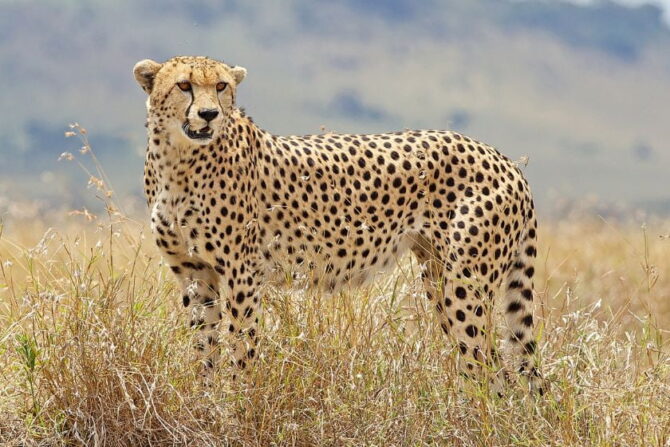
- Scientific Name: Acinonyx jubatus
- Habitat: Savannahs, arid mountains
- Range: Africa, Asia
- Vulnerabilities: Habitat loss, hunting, climate change, low sperm count
- IUCN Red List Status: Vulnerable
The cheetah is a member of the feline family Felidae, a relative to the domestic cat. It can be found in Africa and central Iran, staying in habitats like savannahs and mountains.
The cheetah is the fastest-living land animal, but unfortunately, it is on a slippery slope to extinction.
This wild cat is considered vulnerable on the IUCN Red List Status, and one reason is climate change.
Not only does this lead to habitat loss—which is a huge problem—but it also affects the cheetah’s main prey.
Left with no options, they are forced to go after other animals with less nutritional value. This harms the sperm count.
Temperature also affects the sperm count and testosterone level of the male cheetah, affecting its reproduction level. You needn’t be an animal expert to know the dangers of this.
Related: Rarest Animals In The World (With Pictures)
2. Jaguars
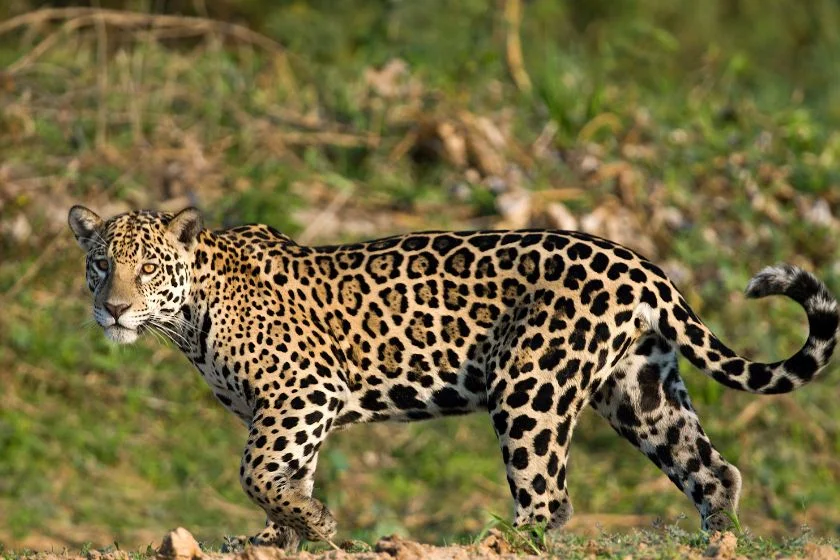
- Scientific Name: Panthera Onca
- Habitat: Forests
- Range: The Americas
- Vulnerabilities: Hunting, natural disasters, habitat loss
- IUCN Red List Status: Near Threatened
The jaguar is also a member of the feline family but belongs to a different genus. It is the only one of its genus that’s native to the Americas, all other Panthera creatures being from either Africa or Asia.
The jaguar inhabits different forests, such as deciduous, rainforests, and cloud forests.
Jaguars are classified as near threatened on the IUCN Red List, and this is due to the threats facing the jaguar.
Climate changes cause natural disasters like hurricanes and drought that affect the jaguar’s population after a while.
3. Adelie Penguin
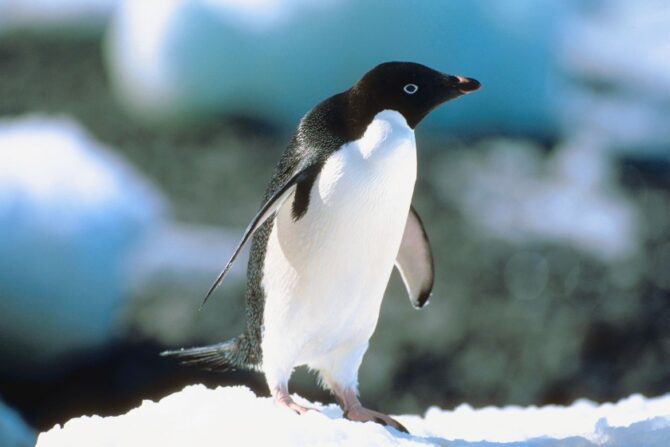
- Scientific Name: Pygoscelis adeliae
- Habitat: Rocky beaches
- Range: Antarctica
- Vulnerabilities: Loss of ice
- IUCN Red List Status: Least Concern
The Adelie penguin is a member of the Spheniscidae family, the name ascribed to the penguin family. It lives in Antarctica, specifically on the rocky beaches.
It is the most widespread penguin, though its range is limited to Antarctica alone. It is also one of the few penguin species that nest on the continent.
The Adelie penguin is classified as the least concern, so it currently faces no threat of extinction. However, climate changes affect this bird.
The rise in temperature leads to the melting of ice, which in turn causes the reduction of krill, the favorite prey of the Adelie penguin.
Left with no option, the Adelie penguin is forced to migrate in search of food, and their breeding process is affected.
4. Panda Bear
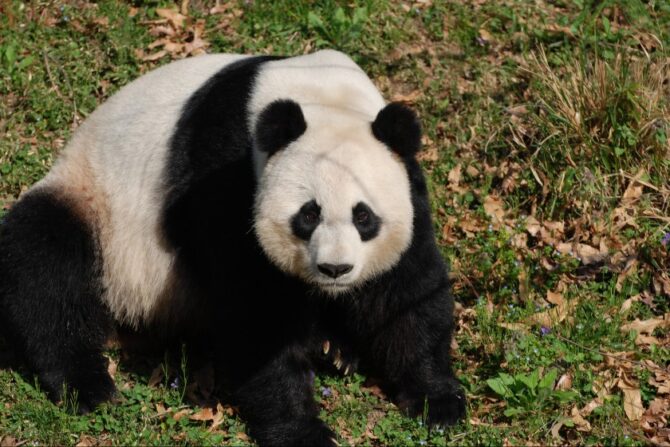
- Scientific Name: Ailuropeda melanoleuca
- Habitat: Parks
- Range: China
- Vulnerabilities: Habitat loss
- IUCN Red List Status: Vulnerable
The panda bear is also called the giant panda or simply panda, though it shouldn’t be confused with the red panda.
It is recognized by the black-and-white coat. The panda bear is endemic to China and can either be in the wild or in captivity.
Panda bears are classified as vulnerable by the IUCN Red List, and their limited range makes them even more susceptible to climate change.
The latter reduces the number of bamboo in their habitat, their main source of food.
5. Asian Elephant
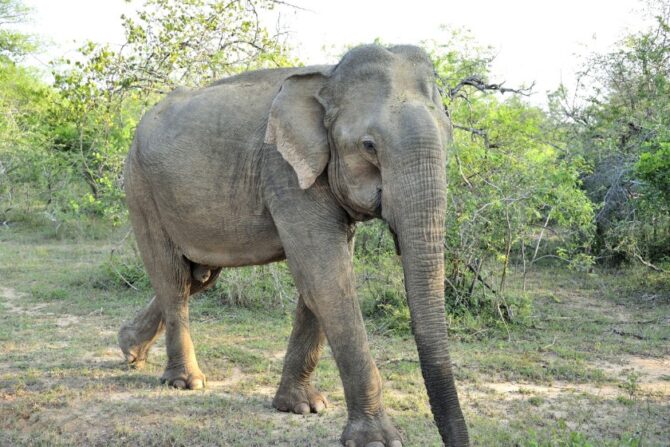
- Scientific Name: Elephas maximus
- Habitat: Grasslands, evergreen forests, deciduous forest
- Range: Asia
- Vulnerabilities: Habitat loss, fragmentation
- IUCN Red List Status: Endangered
The Asian elephant is also known as the Asiatic elephant, and it is the only species in its genus Elephas.
It is widespread in Asia, staying in places like India, Nepal, Borneo, and Sumatra. There used to be five subspecies of the Asian elephant, but only three are left because the other two got extinct.
This mammal is currently listed as endangered by the IUCN Red List, and climate change is one of the many culprits.
The high temperature leads to water shortages which are bad for elephants as they need a lot of water.
It can also cause a change in their diet by making other plants grow past the elephant’s usual diet.
6. Green Turtle
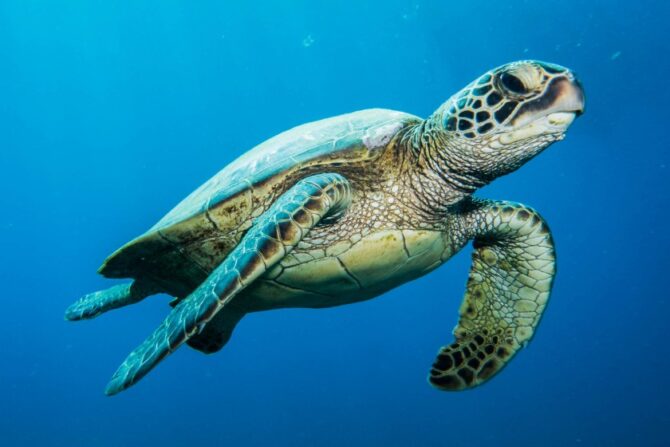
- Scientific Name: Chelonia mydas
- Habitat: Bays, lagoons, shoals
- Range: Atlantic, Pacific, Indian Oceans, tropical and subtropical seas
- Vulnerabilities: Overharvesting of eggs, hunting, loss of nesting beach sites
- IUCN Red List Status: Endangered
The green turtle is also known as the green sea turtle, the Pacific green turtle, and the black (sea) turtle.
It is a member of the Cheloniidae family, a group of large marine turtles with six species.
The green turtle stays in all the major oceans—Atlantic, Pacific, and Indian—as well as some tropical and subtropical seas.
The green turtle is classified as Endangered under the IUCN Red List.
Rising temperatures are affecting the sex ratios of sea turtle populations, as the temperature of the sand determines the sex of the developing eggs.
Warmer temperatures can lead to an increase in the number of female turtles, which can affect the long-term health and survival of the populations.
In addition to sex ratios, rising sea levels and increased storm activity can erode their nesting sites, making it more difficult for them to breed successfully.
Changes in ocean temperature and chemistry also affect the food sources of sea turtles, which can impact their overall health and survival.
7. Polar Bear

- Scientific Name: Ursus maritimus
- Habitat: Sea ice
- Range: Artic circle
- Vulnerabilities: Loss of sea ice
- IUCN Red List Status: Vulnerable
The polar bear is a native of the Artic circle, which explains its name. It is a member of the bear family known as Ursidae, but it distinguishes itself from other bears by being majorly carnivorous.
It is both the largest bear and the largest living land carnivore too. Polar bears live on sea ice, and that’s where climate change affects them.
Due to the rising temperature, the sea ice melts, leaving these bears with fewer homes. Polars also hunt on this ice, so the loss affects their diet too.
Furthermore, the loss of sea ice makes it easier for humans to access the Arctic, leading to increased interactions between polar bears and people.
8. Tiger
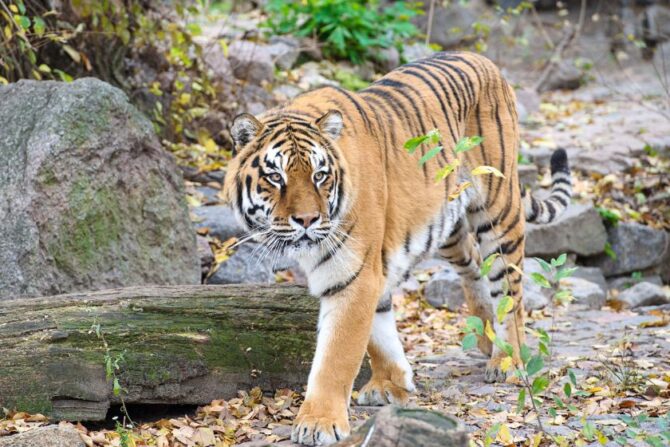
- Scientific Name: Panthera Tigris
- Habitat: Forests
- Range: Asia
- Vulnerabilities: Habitat
- IUCN Red List Status: Endangered
The tiger is a popular canid, but unfortunately no longer as widespread as it used to be.
It can be found more in the Asian continent, going from Russia to other places like China, India, and North Korea.
It thrives better in forests like deciduous, evergreen, and swamp forests.
The IUCN Red List classifies the tiger as endangered, and this is due to different factors, including climate change.
Climate change leads to rising sea levels which clears off forests, the tiger’s main habitat.
9. Monarch Butterfly
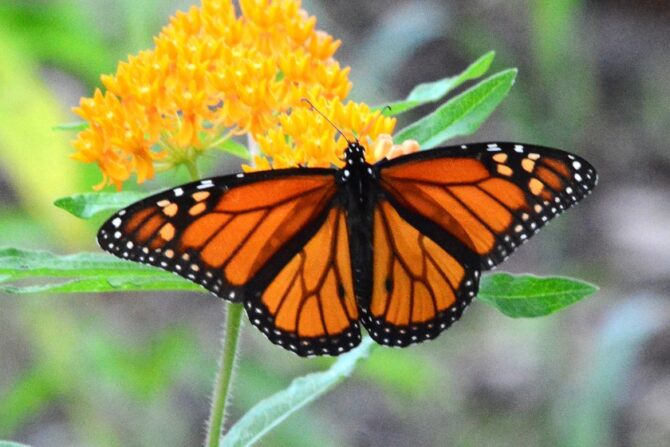
- Scientific Name: Danaus Flexipus
- Habitat: Cottonwood, mulberry, oak
- Range: The Americas
- Vulnerabilities: Sensitive to climate
- IUCN Red List Status: Least Concern (entire species), Endangered (migratory subspecies)
The monarch butterfly is a member of the family Nymphalidae and the subfamily Danaine.
It can simply be called the monarch and other alternative names like the common tiger, the wanderer, milkweed, and black-veiled brown.
It is very popular in North America and also lives in the south. As a butterfly, it can often be found pollinating a variety of flowers.
Generally, the monarch butterfly is considered as least concern. However, there is a subspecies known as the migratory butterfly.
It is listed as endangered despite being common in the United States. Because this butterfly is sensitive to the climate, changes can affect its migration, reproduction, and hibernation.
10. Moose
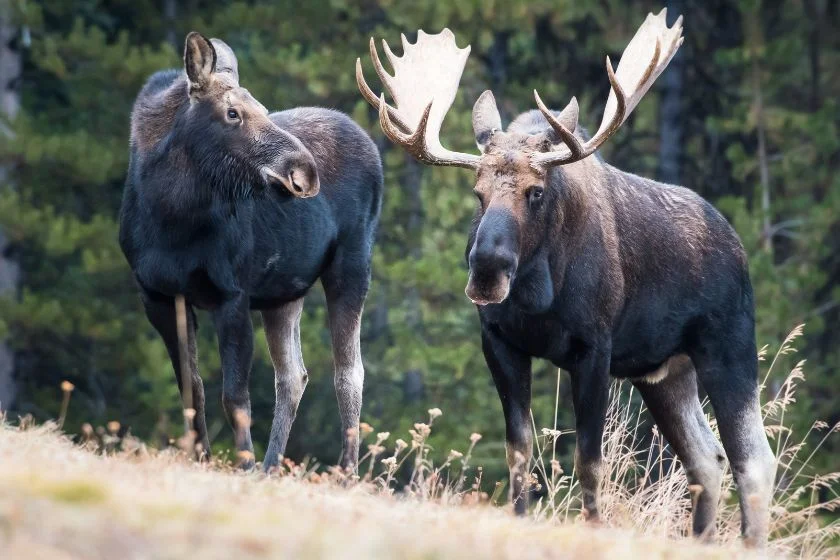
- Scientific Name: Alces alces
- Habitat: Boreal forests, mixed forests
- Range: North America, Europe, Asia
- Vulnerabilities: Sensitive to changes in temperature
- IUCN Red List Status: Least Concern
The moose is also called an elk in Europe and Asia. It is a New World deer that’s classified under the subfamily Capreolinae, and it is the only animal in its genus Alces.
Amongst deers, it is the largest and heaviest. The moose dwells in different habitats like deciduous forests, boreal, and mixed forests.
The moose is classified as the least concern, which means climate change hasn’t left a strong mark.
However, it still is a problem. The rising temperature exposes these animals to heat stress, diseases, and parasites. They are also sometimes forced to change their habitat.
We can help limit climate change
You can also contribute to protecting the world from climate change, starting with simple steps. Here are actions you can take to help tackle the climate crisis:
- Educate your loved ones and the people around you about the dangers of climate change.
- Get the influence of politicians and businesses to further your cause.
- Plant trees to combat the increasing deforestation.
- Invest in financial institutions that are concerned about the planet.
- Walk or use a bicycle, or take public transport whenever possible.
Final Thoughts
Despite the evidence, some people still believe climate change is not real.2
It is important to know that climate change is having a negative effect on people, wildlife, and ecosystems around the world.
Though this list of animals affected by climate change is by no means exhaustive, they are a few examples of how global warming is affecting different species.
These species are facing challenges from changing habitat and food sources, increased human activity, and other threats.
The loss of these species can have cascading effects on the ecosystem and the food chain.
We all must join hands to preserve the planet and the animals within.
This can include reducing greenhouse gas emissions, protecting and restoring habitats, and reducing other threats to wildlife.
Up Next…
References & Notes
- How Do We Know Climate Change Is Real? Vital Signs of the Planet.
- Why people still believe climate change is fake… and why we know they’re wrong. University of Hull.






